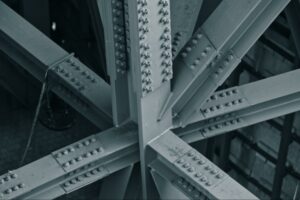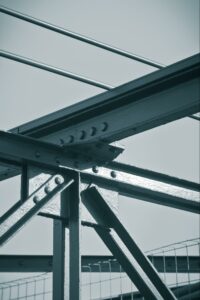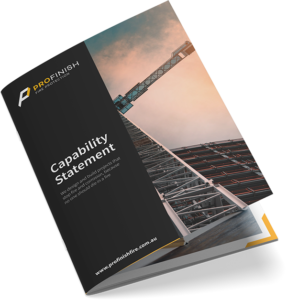 Intumescent coatings or paints are an efficient way of protecting structural materials against fire. It’s a simple and efficient way to protect beams, columns, walls, braces, and trusses. Protecting the supports of a building is the highest priority of passive fire protection as it allows time for evacuation and makes a building safer for emergency services to deal with in the event of a fire. So how can paint strengthen a building’s structure during a fire? It comes down to the application process. Intumescent coatings are effective when they’re correctly applied to surfaces with the correct dry film thickness.
Intumescent coatings or paints are an efficient way of protecting structural materials against fire. It’s a simple and efficient way to protect beams, columns, walls, braces, and trusses. Protecting the supports of a building is the highest priority of passive fire protection as it allows time for evacuation and makes a building safer for emergency services to deal with in the event of a fire. So how can paint strengthen a building’s structure during a fire? It comes down to the application process. Intumescent coatings are effective when they’re correctly applied to surfaces with the correct dry film thickness.
Preparation of the surface
Proper preparation of surfaces is crucial when applying intumescent coatings to ensure effectiveness. The surfaces must be free from contaminants such as grease, oil, rust, dirt, or other substances that may hinder the bonding process. Failure to remove these contaminants may lead to poor adhesion and result in the coating not performing as intended. To avoid these issues, surfaces must be cleaned thoroughly using a specialised cleaning agent before applying the intumescent coating.
Intumescent coatings can be applied to a variety of surfaces, including steel, concrete, and wood in both indoor and outdoor environments. Intumescent coatings are suitable for application on structural elements such as columns, beams, and walls to provide fire protection.

Priming surfaces for intumescent coatings
After surfaces are cleaned, they’re prepared for priming. Priming is required to create a smooth and uniform base for the intumescent coating to be applied onto. Priming also helps to seal any open surface areas and prevent moisture from penetrating the surface. This can weaken the coating’s effectiveness.
A specific type of primer will be utilised depending on the type of surface. For example, if the surface to be coated is made of galvanised steel, a zinc-rich primer may be required to ensure proper adhesion and protection against corrosion. Similarly, if the surface is exposed to harsh weather conditions or chemicals, a specialised primer may be necessary to enhance the coating’s durability and resistance in the event of a fire.
Intumescent coating
The word intumescent means to swell. Once the intumescent coating is applied to supports, if it is exposed to temperatures above 200°C a protective intumescent film forms providing up to 120 minutes of fire protection. The dry paint coating and quantity of paint required for a certain fire resistance time are important for it to properly swell. The dry film thickness formed after the intumescent coating is applied is determined by:
- Mass factor, also known as massivity, section factor, or Hp /A or Ap /V, is a crucial factor in determining the level of fire protection required for a building. It’s a ratio between the area of the material exposed to fire and the volume of the material section. The higher the mass factor, the faster the raw material uncoated heats up and the greater the thickness of the fire protection material required.
- Exposure: The shape of the structure (column or beam, hollow or not) and the number of faces that could be exposed to fire.
- Critical temperature: the temperature at which the building supports don’t have enough strength to support the structure that they’re maintaining. The lower the critical temperature the greater the coating thickness needs to be.
Sealer Application for intumescent coatings
The durability and performance of coatings can be affected by the environment that they’re exposed to or the look of coatings can affect the architectural design of a building if building supports are exposed. It’s essential to ensure that the coating used is capable of withstanding the specific conditions it will be subjected to and suit the architecture.
Enhancing the durability, performance and look of coatings is done by applying a sealer as a top coat. A sealer provides an additional layer of protection against corrosion, rusting, and UV radiation. Sealing the coating will also improve its aesthetic appeal.
Expert application of intumescent coatings
Intumescent coating systems are applied with three components: a primer, the intumescent coating and a sealer. The base coat is the most important layer as it’s the one that reacts to fires and expands to protect the building structure. The effectiveness of intumescent paint to swell when exposed to extreme heat comes down to the products used and how they’ve been applied to the material. It’s ideal to have an expert select your intumescent paint coating, primer and topcoat for your specific building and apply it.
At PROFINISH we’ve worked on multiple projects using intumescent coatings such as Victoria Place, Geelong Arts Centre Redevelopment and COGG Civic Precinct. Call us on (03) 5274 1226 or email estimating@profinishfire.com.au to discuss your project and passive fire protection requirements.

